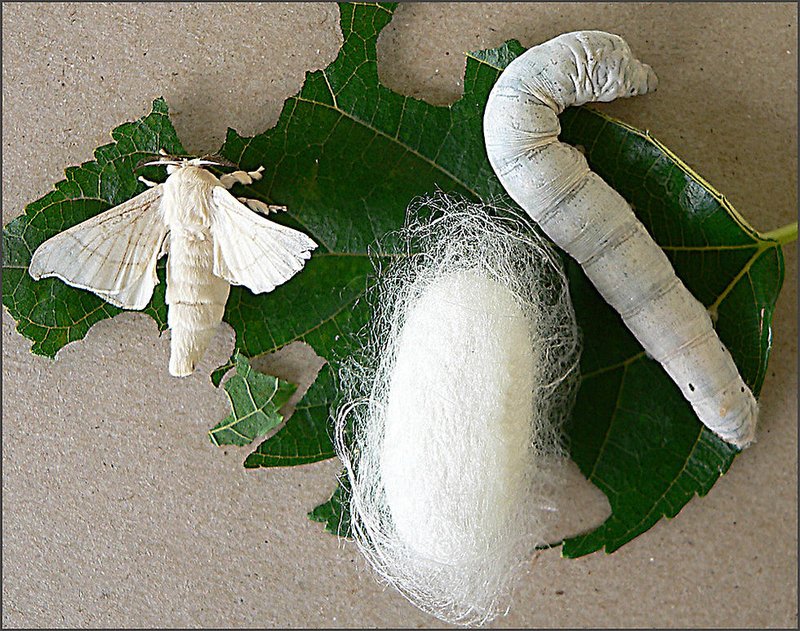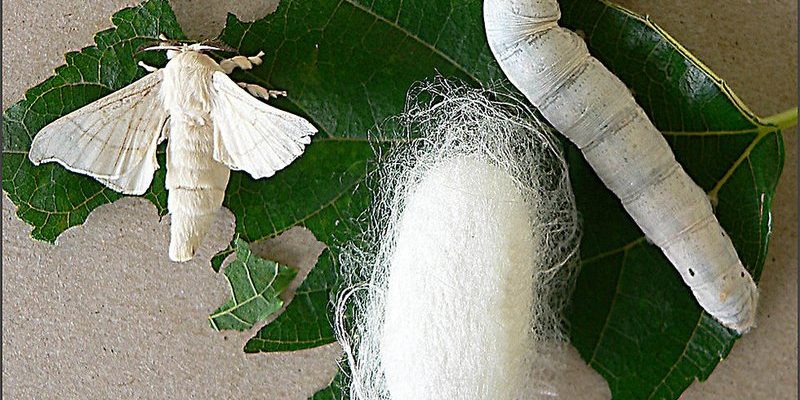
The life of a silkworm is all about metamorphosis. After munching on mulberry leaves and growing plump, they spin themselves into cocoons—this is where the magic truly happens! But the duration of their stay in this silky sanctuary might surprise you. So, grab a comfy seat and let’s explore the life of silkworms, their cocoons, and what happens during this incredible transformation.
The Life Cycle of Silkworms
Before we get into the cocoon stage, let’s look at the entire life cycle of silkworms. Silkworms start as eggs, which hatch into larvae, or caterpillars. Once they’ve eaten enough mulberry leaves and grown to a suitable size, they enter the pupal stage, where they spin their cocoons. This whole journey—from egg to cocoon—takes a few weeks.
Once the silkworms are ready to spin their cocoons, they do so in a matter of hours. The spinning process can be likened to a little factory going to work! Can you imagine wrapping yourself in thread? That’s pretty much what they’re doing, using a special protein to create that beautiful silk. The cocoons are typically made up of one long thread that can be up to a mile long!
How Long Do Silkworms Stay in Their Cocoons?
You might be wondering, “So, how long do they actually stay in these cocoons?” Generally, silkworms remain in their cocoon for about 10 to 14 days. This might seem like a short amount of time, but a lot happens in that cozy space. During this period, the silkworm undergoes a transformation into a moth. It’s like nature’s really cool magic show!
It’s important to note that the exact duration can vary. Factors like temperature and humidity can influence how long they stay in their silky shells. In ideal conditions, this transformation can happen faster. However, if the environment isn’t quite right, it may take a bit longer for the silkworms to emerge as moths.
The Cocoon’s Purpose
The cocoon isn’t just a comfy bed—it’s a protective shell. Think of it as a cozy chamber where the silkworm is safe from predators and external threats. Inside the cocoon, the silkworm’s body breaks down and reorganizes itself into the structure of a moth. This process is called metamorphosis.
The material of the cocoon is quite remarkable too! It’s made of a protein called fibroin, which is produced in the silkworm’s salivary glands. This silk is not only strong but also lightweight. Once the transformation is complete, the silkworm can break free as an adult moth ready to start its own life cycle.
After Emerging from the Cocoon
Once silkworms complete their metamorphosis, they emerge as adult moths. This usually happens about 10–14 days after they formed their cocoons. Imagine waking up from a long sleep feeling refreshed and a little confused! Adult silkworms have a short lifespan—usually only about a week, during which they mate and lay eggs.
You might find it fascinating that adult silkworm moths cannot fly. Instead, they rely on their silk cocoons for survival. Once they emerge, their main goal is to reproduce, and it’s a fascinating sight to see! This cycle starts all over when the female lays eggs, continuing the magical journey of silkworms.
How Temperature and Humidity Affect Cocoon Duration
Environmental factors play a huge role in how long silkworms stay in their cocoons. Let’s break this down a bit. Ideal conditions—like a warm and humid environment—help speed up the metamorphosis process.
On the flip side, if the conditions are too cold or dry, the silkworms might take longer to emerge. Just like we might prefer to stay cozy under a blanket when it’s chilly outside, silkworms are affected by their surroundings too. If you’re considering raising silkworms, keeping an eye on temperature and humidity is key to their development.
Potential Challenges During the Cocoon Stage
Despite the beauty of their transformation, there can be challenges during the cocoon stage. Sometimes, cocoons can be damaged by pests or mold, which can impact the silkworms inside. Here’s the thing: if you’re thinking about caring for silkworms, be prepared to create a safe, clean environment for them.
Some people also choose to harvest the silk before the moths emerge, which can be a tricky decision. This process involves boiling or steaming the cocoons, so the moth doesn’t have a chance to break free. It’s a common practice in the silk industry, but it’s important to consider the ethics involved as well.
The Significance of Silkworms in Ecosystems and Culture
Silkworms and their cocoons carry significant importance beyond just silk production. They play a role in various ecosystems, supporting food chains. Plus, they’ve been part of human culture for centuries! In many parts of the world, silk is a symbol of luxury and elegance.
You can find silkworm references in ancient texts and cultures, showcasing their historical value. The artistry involved in silk production inspires admiration, while their transformation symbolizes change and growth.
In summary, silkworms stay in their cocoons for about 10 to 14 days, depending on their environment. During this time, they undergo an incredible transformation into moths. Whether you’re interested in raising them yourself or just curious about their lifecycle, understanding this journey is truly remarkable!
Silkworms may be small, but their life story is anything but ordinary. From the moment they spin their cocoons to their arrival as adult moths, there’s a world of wonder to explore in their silky tale!

